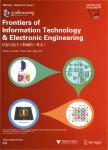An improved chaotic hybrid differential evolution for the short-term hydrothermal scheduling problem considering practical constraints
An improved chaotic hybrid differential evolution for the short-term hydrothermal scheduling problem considering practical constraints作者机构:Electrical Engineering Department University of Engineering and Technology
出 版 物:《Frontiers of Information Technology & Electronic Engineering》 (信息与电子工程前沿(英文版))
年 卷 期:2015年第16卷第5期
页 面:404-417页
核心收录:
学科分类:0810[工学-信息与通信工程] 0808[工学-电气工程] 080802[工学-电力系统及其自动化] 0809[工学-电子科学与技术(可授工学、理学学位)] 0839[工学-网络空间安全] 08[工学] 0835[工学-软件工程] 0812[工学-计算机科学与技术(可授工学、理学学位)]
主 题:Valve-point effect Prohibited discharge zones Differential evolution Chaotic sequences Constraint handling
摘 要:Short-term hydrothermal scheduling(STHTS) is a non-linear and complex optimization problem with a set of operational hydraulic and thermal constraints. Earlier, this problem has been addressed by several classical techniques; however, due to limitations such as non-linearity and non-convexity in cost curves, artificial intelligence tools based techniques are being used to solve the STHTS problem. In this paper an improved chaotic hybrid differential evolution(ICHDE) algorithm is proposed to find an optimal solution to this problem taking into account practical constraints. A self-adjusted parameter setting is obtained in differential evolution(DE) with the application of chaos theory, and a chaotic hybridized local search mechanism is embedded in DE to effectively prevent it from premature convergence. Furthermore, heuristic constraint handling techniques without any penalty factor setting are adopted to handle the complex hydraulic and thermal constraints. The superiority and effectiveness of the developed methodology are evaluated by its application in two illustrated hydrothermal test systems taken from the literature. The transmission line losses, prohibited discharge zones of hydel plants, and ramp rate limits of thermal plants are also taken into account. The simulation results reveal that the proposed technique is competent to produce an encouraging solution as compared with other recently established evolutionary approaches.



